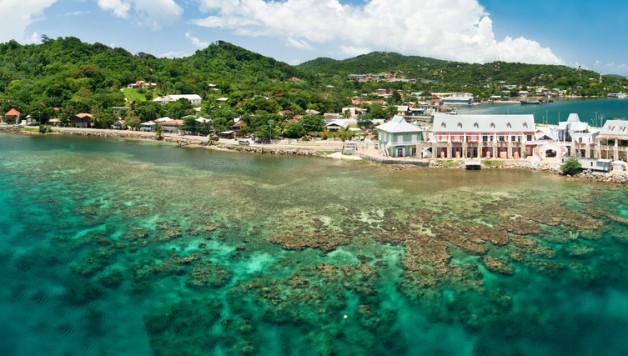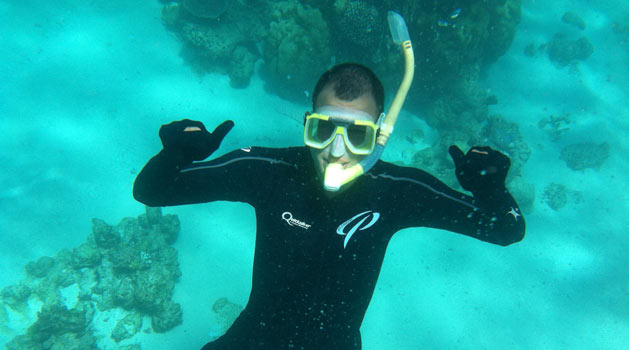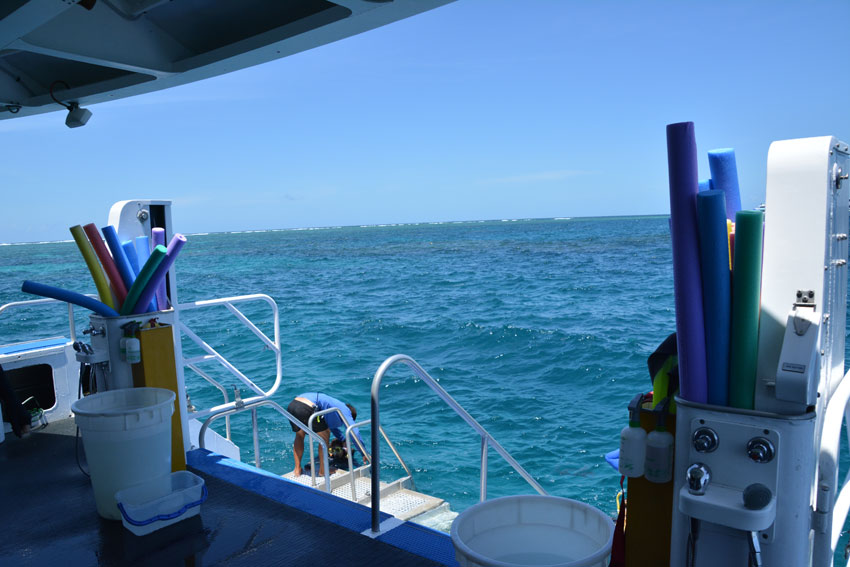Live life and learn to dive – be more active on your next vacation
For many people, the perfect holiday is all about lying on a beach and doing very little in terms of activity for the duration of the stay. More and more travelers, however, want something more from their trip and are learning how to dive. Diving is fun, family-friendly and an incredible experience. All this, plus you can still get a tan while learning the ropes.
Why learn?
Those that love to dive often compare it to being on a plane: staring down at the complexities of nature from the clouds above is on a par to being submerged in water surrounded by a plethora of neon life forms – quite surreal at times.
While technical dives involving rushing currents, low visibility and treacherous wreck exploration may be suitable for the more experienced diver, anyone can dabble in relative shallows among stunning corals and tropical fish. There are a multitude of excellent international diving schools where you can gain the skills and confidence to cope under the water and renowned sites where you can see everything from sea turtles to sunken military vessels.
What are the different types of diving?
Snorkeling is open to anyone of any age and experience level and requires far less equipment than other intensive types of diving. The best things to see are often closer to the surface than at greater depth. Beautiful coral and marine life awaits, and all you have to do is jump off a boat or simply swim out from shore to see them. Scuba diving is both accessible and addictive; it isn’t too difficult either, and the warmer waters instantly make you feel relaxed.
Once you have grasped the basics of diving and gained confidence in your ability, there are many more dive options available to you. Wall diving is often said to be the highlight of any dive holiday, and dive schools will often promote this type of experience over any other. A favorite with underwater photographers, a wall dive essentially involves scouring an underwater cliff face, which is usually adorned with stunning sea jewels and attracts many brightly-colored fish. It usually runs from shallow to deep and then suddenly drops off the edge of the ocean. It is a thrilling and illuminating experience but is not without its hazards: constant monitoring and depth control is vital as there is no visual indicator of how deep you are going, and the reef walls have strong currents which make buoyancy and navigation difficult for the novice diver.
Drift diving is popular, as it is not defined by any equipment or technique; instead, you rely on the current to take you along. Not having to exert yourself means that you can simply enjoy covering a wide expanse of water to see the stunning habitats and coral formations. The currents tend to be stronger than perhaps anticipated, so basic training is essential, but, once mastered, drifting is the epitome of relaxation.
Fascinating and exhilarating, cave diving is like normal cave exploration with the added thrill of being underwater. There are no waves or tides within the cave walls, so it almost feels like you are floating in the air. What may look plain from the outside is a chasm of beauty inside, with intricate and often narrow pathways leading to bigger and better open spaces full of exciting nooks and crannies to explore.
Dubbed “extreme scuba diving”, technical diving involves going deeper than would be possible using regular scuba diving techniques. Such diving involves numerous training courses and qualifications to be gained. It focuses heavily on the importance of gas mixing – the amount of nitrogen and oxygen is different depending on how far down you go. Decompression stops are essential in technical diving where you stop off in more shallow waters to get your oxygen levels up; the deeper you go, the more often you will have to stop. Of course, the deeper you go the more spectacular things you are likely to see. With all this in mind, technical diving is the most risky of dive types but arguably the most rewarding.
Where can I dive?
There are numerous diving sites across the globe that are revered for their wildlife or complexity; these range from the Bahamas and Florida to the Philippines and Southeast Asia – not forgetting Australia’s infamous Great Barrier Reef. Thailand has some of the most internationally acclaimed diving schools and fascinating sites, which include breathtaking reefs and penetrable wreckage. Phi Phi Island, Koh Samui and Phangan all offer something special, but Pattaya is arguably the greatest place to dive in the country – and indeed the world.
With four sunken wrecks to choose from, it’s known as the “global shipwreck capital.” Divers have the option to visit HTMS Khram, a purposely sunk Thai Navy landing vessel used as an artificial reef, where you can see into the bridge and radio rooms as well as view the large hull through the portholes. Approximately 60 minutes from Pattaya beach, there are six small islands, many of which have reefs and rock pinnacles that an array of fish, hawksbill turtles and manta rays call home.
Due to the sheer amount of diving schools and dive experiences on offer, visitors are encouraged to spend at least a few days in Pattaya in order to take advantage of the off-shore facilities. Liveaboard trips are not available in Pattaya, so you have to stay on land. Expedia Ca offer a number of fantastic hotels in the area, so why not make the most of your trip and visit some of the city’s famous sites while you are there? It is affectionately known as Thailand’s adopted capital, after all.
Once you have dived in Thailand you should be able to dive anywhere else in the world; however, Thailand has a great deal to offer the novice as well as the most experienced divers.
Wherever you choose to learn to dive, and whatever dive you decide to embark upon, you can be sure that you will learn the vital skills and enjoy opportunities that only a relatively small number of the world’s population will ever get to experience – and you will want to do it again and again.
photo credit: John in LA via photopin cc















